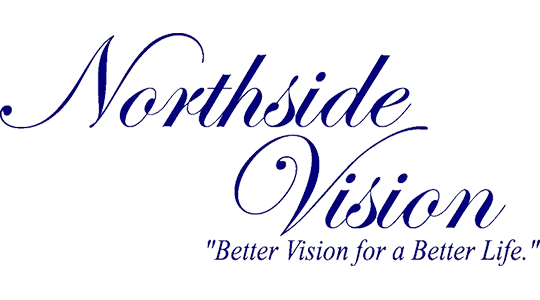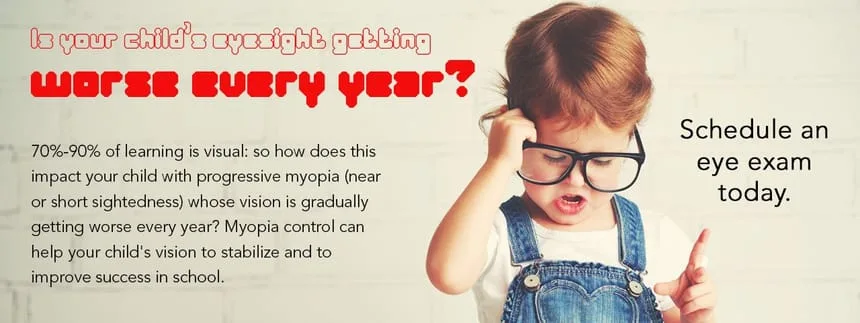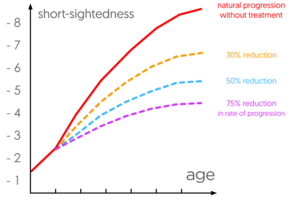WHAT IS MYOPIA?
Myopia, or nearsightedness, is a refractive condition where the eye is unable to focus images properly resulting in blurry vision when looking at far away objects. During childhood, myopia may progress and the eye grow longer.
WHY DOES MYOPIA MATTER?
Possibly due to increased time on digital devices and reduced outdoor time, multiple studies show myopia becoming much more common in children and showing up at earlier ages and progressing more rapidly. This leads to trouble seeing the board in school, decreased grade, as well as an increased risk of vision-threatening eye diseases such as:
- Cataracts
- Retinal Detachment
- Myopic maculopathy
- Retinal tears and breaks
- Glaucoma
The table below shows the increased risk of certain conditions in those with myopia compared to a patient who is not nearsighted at all.
Eye Disease | -2.00 | -4.00 | -6.00 |
Myopic Maculopathy* | 2.2x | 9.7x | 40.6x |
Retinal Detachment** | 3.1x | 9.0x | 21.5x |
Glaucoma* | 2.3x | 3.3x | 3.3x |
*BlueMountain Eye Study, Vongphanit et al., 2002
**Ogawa & Tanaka, 1988
IS MYOPIA CONTROL RIGHT FOR MY CHILD?
Dr. Stiling, our myopia control specialist, can evaluate your child and discuss the potential benefits of myopia control. Some factors that Dr. Stiling considers when determining your child’s risk of fast or slow progression are as follows:
- Current amount of nearsightedness
- Amount of change in nearsightedness in the last 12 months
- Parental history of nearsightedness
- Ethnicity
- Age
HOW CAN MYOPIA CONTROL HELP MY CHILD?
The purpose of myopia control is to reduce the progression of your child’s nearsightedness and to reduce your child’s axial length (length of the eye).
Consequently, the amount of blurred vision the child experiences as well as the risk of vision-threatening conditions like those listed above decreases.
WHAT TREATMENT OPTIONS ARE AVAILABLE FOR MYOPIA CONTROL?
At Northside Vision, our myopia control specialist, Dr. Melissa Stiling, can evaluate your child and then tailor a treatment plan specifically for your child. The most common methods for reducing myopia progression are:
- certain types of eyeglasses lenses (executive bifocals or progressive addition lenses)
- soft multifocal contact lenses
- orthokeratology (molding the cornea with rigid gas permeable lenses)
- eye drops called atropine
After a conversation with you and your child, a decision can be made about which treatment option is right for your child.
WHAT HAPPENS AT A VISIT FOR MYOPIA CONTROL?
When your child is being treated to slow myopia progression, there are several tests that are done at each visit to monitor the effectiveness of the treatment including dilation, retinal screening with Optomap, axial length measurement (measures the length of the eyeball) with the Aladdin-M, and refraction to determine current amount of myopia.



